- Home
- Alice Hoffman
The River King
The River King Read online
Table of Contents
Title Page
Copyright Page
THE IRON BOX
NEEDLES AND THREAD
THE RING AND THE DOVE
WALKING ON FIRE
THE VEILED WOMAN
THE WATCH AND THE LOAF
THE DISAPPEARING BOY
THE ARBOR
Praise for Alice Hoffman’s
THE RIVER KING ...
“Haunting.” —Boston Herald
“A ripping yarn and suspenseful ghost tale ... Hoffman has a knack for smoothly wandering into the life story of each new character we meet, and then returning to the overarching narrative seamlessly.”
—Rocky Mountain News
“Hoffman’s faithful should be pleased with her latest effort.”
—The San Diego Union-Tribune
“The River King is far more than the standard tale of a town-vs.-gown clash.”—St. Louis Post-Dispatch
“Polished prose ... tightly plotted ... this is fiction that will please Hoffman’s many fans.”—Milwaukee Journal Sentinel
“A rich, layered story.”—The Irish Times
“The River King is proof that [Alice Hoffman} just gets better and better.”—The London Times
LOCAL GIRLS ...
“Wonderful.”—The Cleveland Plain Dealer
“Pulls the reader in effortlessly ... Hoffman has the power to make you really laugh and really cry.”—USA Today
“Moving and deadpan funny ... Epiphanies about passion, pain, and resiliency induce smiles and shivers in equal measure.”
—Entertainment Weekly
HERE ON EARTH ...
“Written with great wisdom and compassion ... one of the finest fictional explorations of family love, and all those forces that threaten to undermine it, that I’ve read in many years.” —The Washington Post Book World
“A Wuthering Heights for the ’90s ... profound.”
—The New York Times Book Review
“Her books unfold artfully without feeling fussed over or writing-workshopped to death.... [In] Here on Earth, she plumbs the interior lives of, among others, a drunken recluse, a heartsick teenage boy, an angry daughter, a near madman, a cuckolded husband, and three wounded women, with such modesty and skill that she seems to witness rather than invent their lives.”—Entertainment Weekly
“One of her most disturbing works ... Here on Earth will disappoint none of her fans, and proves again that to read Hoffman is to have one’s life enriched immeasurably.”—Rocky Mountain News
ANGEL LANDING ...
“A good, old-fashioned love story ... Alice Hoffman’s writing at its precise and heartbreaking best.”—The Washington Post
“An affecting love story, laced with humor.” —Booklist
SECOND NATURE ...
“Magical and daring ... very possibly her best.”
—The New York Times Book Review
“Suspenseful ... a dark, romantic meditation on what it means to be human.”—The New Yorker
“Hoffman tells a great story. Expect to finish this one in a single, guilty sitting.”
—Marabella
“Second Nature may be best read at full speed, hurtling down the mountain, as if falling in love.”—San Francisco Examiner-Chronicle
TURTLE MOON...
“Magnificent.” —The New York Times Book Review
“A spectacular novel.”—Susan Isaacs, The Washington Post World
“Hard to put down ... full of characters who take hold of your heart.”
—San Francisco Examiner
“Beautiful.” —The Seattle Times
“She is a born storyteller ... and Turtle Moon is one of her best.”
—Entertainment Weekly
PRACTICAL MAGIC ...
“A beautiful, moving book about the power of love and the desires of the heart.”—The Denver Post
“Splendid ... Practical Magic is one of her best novels, showing on every page her gift for touching ordinary life as if with a wand, to reveal how extraordinary life really is.”—Newsweek
“Written with a light hand and a perfect rhythm ... Practical Magic has the pace of a fairy tale but the impact of accomplished fiction.” —People
“[A] delicious fantasy of witchcraft and love in a world where gardens smell of lemon verbena and happy endings are possible.”—Cosmopolitan
FORTUNE’S DAUGHTER ...
“One of the best novels to come out of the United States in a decade.”
—Annie Dillard
PROPERTY OF ...
“An unmistakably gifted work ... Alice Hoffman flares with talent.”
—Kirkus Reviews
Praise for Alice Hoffman ...
“Alice Hoffman takes seemingly ordinary lives and lets us see and feel extraordinary things.”—Amy Tan
“Hoffman seems certain to join such writers as Anne Tyler and Mary Gordon ... a major novelist.”—Newyweek
“One of the brightest and most imaginative of contemporary writers.”
—The Sacramento Bee
“Her touch is so light, her writing so luminous.”
—The Orlando Sentinel
“Her novels are as fluid and graceful as dreams.”
—The San Diego Union-Tribune
“Showing the magic that lies below the surface of everyday life is just what we hope for in a satisfying novel, and that’s what Ms. Hoffman gives us every time.”—The Baltimore Sun
“A reader is in good hands with Alice Hoffman, able to count on many pleasures.”—Jane Smiley, USA Today
“With her glorious prose and extraordinary eye ... Alice Hoffman seems to know what it means to be a human being.”
—Susan Issacs, Newsday
Books by Alice Hoffman
PROPERTY OF
THE DROWNING SEASON
ANGEL LANDING
WHITE HORSES
FORTUNE’S DAUGHTER
ILLUMINATION NIGHT
AT RISK
SEVENTH HEAVEN
TURTLE MOON
SECOND NATURE
PRACTICAL MAGIC
HERE ON EARTH
LOCAL GIRLS
THE RIVER KING
BLUE DIARY
* * *
For Children
FIREFLIES
HORSEFLY
AQUAMARINE
INDIGO
A Berkley Book
Published by The Berkley Publishing Group
A division of Penguin Putnam Inc.
375 Hudson Street
New York, New York 10014
This is a work of fiction. Names, characters, places and incidents are either the product of
the author’s imagination or are used fictitiously, and any resemblance to actual persons, living
or dead, business establishments, events or locales is entirely coincidental.
Copyright © 2000 by Alice Hoffman
This book, or parts therof, may not be reproduced in any form without permission.
BERKLEY and the “B” design are trademarks belonging to Penguin Putnam Inc.
eISBN : 978-1-440-67424-2
PS3558.O3447 R-023870
813’.54—dc21
PLEASE VISIT THE AUTHOR’S WEB SITE AT
www.alicehoffman.com
http://us.penguingroup.com
THE IRON BOX
THE HADDAN SCHOOL WAS BUILT in 1858 on the sloping banks of the Haddan River, a muddy and precarious location that had proven disastrous from the start. That very first year, when the whole town smelled of cedar shavings, there was a storm of enormous proportions, with winds so strong that dozens of fish were drawn up from the reedy shallows, then lifted above the village in a shining cloud of scales. Torrents of water fel
l from the sky, and by morning the river had overflowed, leaving the school’s freshly painted white clapboard buildings adrift in a murky sea of duckweed and algae.
For weeks, students were ferried to classes in rowboats; catfish swam through flooded perennial gardens, observing the disaster with cool, glassy eyes. Every evening, at twilight, the school cook balanced on a second-story window ledge, then cast out his rod to catch dozens of silver trout, a species found only in the currents of the Haddan River, a sweet, fleshy variety that was especially delectable when fried with shallots and oil. After the flood subsided, two inches of thick, black silt covered the carpets in the dormitories; at the headmaster’s house, mosquitoes began to hatch in sinks and commodes. The delightful watery vistas of the site, a landscape abundant with willows and water lotus, had seduced the foolish trustees into building much too close to the river, an architectural mistake that has never been rectified. To this day, frogs can be found in the plumbing; linens and clothes stored in closets have a distinctly weedy odor, as if each article had been washed in river water and never thoroughly dried.
After the flood, houses in town had to be refloored and reroofed; public buildings were torn down, then refashioned from cellar to ceiling. Whole chimneys floated down Main Street, with some of them still issuing forth smoke. Main Street itself had become a river, with waters more than six feet deep. Iron fences were loosened and ripped from the earth, leaving metal posts in the shape of arrows adrift. Horses drowned; mules floated for miles and when rescued, refused to eat anything but wild celery and duckweed. Poison sumac was uprooted and deposited in vegetable bins, only to be mistakenly cooked along with the carrots and cabbages, a recipe that led to several untimely deaths. Bobcats showed up on back porches, mewing and desperate for milk; several were found beside babies in their cradles, sucking from bottles and purring as though they were house cats let in through front doors.
At that time, the rich fields circling the town of Haddan were owned by prosperous farmers who cultivated asparagus and onions and a peculiar type of yellow cabbage known for its large size and delicate fragrance. These farmers put aside their plows and watched as boys arrived from every corner of the Commonwealth and beyond to take up residence at the school, but even the wealthiest among them were unable to afford tuition for their own sons. Local boys had to make do with the dusty stacks at the library on Main Street and whatever fundamentals they might learn in their very own parlors and fields. To this day, people in Haddan retain a rustic knowledge of which they are proud. Even the children can foretell the weather; they can point to and name every constellation in the sky.
A dozen years after the Haddan School was built, a public high school was erected in the neighboring town of Hamilton, which meant a five-mile trek to classes on days when the snow was knee-deep and the weather so cold even the badgers kept to their dens. Each time a Haddan boy walked through a storm to the public school his animosity toward the Haddan School grew, a small bump on the skin of ill will ready to rupture at the slightest contact. In this way a hard bitterness was forged, and the spiteful sentiment increased every year, until there might as well have been a fence dividing those who came from the school and the residents of the village. Before long, anyone who dared to cross that line was judged to be either a martyr or a fool.
There was a time when it seemed possible for the separate worlds to be united, when Dr. George Howe, the esteemed headmaster, considered to be the finest in the Haddan School history, decided to marry Annie Jordan, the most beautiful girl in the village. Annie’s father was a well-respected man who owned a parcel of farmland out where Route 17 now runs into the interstate, and he approved of the marriage, but soon after the wedding it became apparent that Haddan would remain divided. Dr. Howe was jealous and vindictive; he turned local people away from his door. Even Annie’s family was quickly dispatched. Her father and brothers, good, simple men with mud on their boots, were struck mute the few times they came to call, as if the bone china and leather-bound books had robbed them of their tongues. Before long people in town came to resent Annie, as if she’d somehow betrayed them. If she thought she was so high and mighty, in that fine house by the river, then the girls she grew up with felt they had reason to retaliate, and on the streets they passed her by without a word. Even her own dog, a lazy hound named Sugar, ran away yelping on those rare occasions when Annie came to visit her father’s farm.
It quickly became clear that the marriage had been a horrid mistake; anyone more worldly than Annie would have known this from the start. At his very own wedding, Dr. Howe had forgotten his hat, always the sign of a man who’s bound to stray. He was the sort of person who wished to own his wife, without belonging to her in return. There were days when he spoke barely a sentence in his own home, and nights when he didn’t come in until dawn. It was loneliness that led Annie to begin her work in the gardens at Haddan, which until her arrival were neglected, ruined patches filled with ivy and nightshade, dark vines that choked out any wildflowers that might have grown in the thin soil. As it turned out, Annie’s loneliness was the school’s good fortune, for it was she who designed the brick walkways that form an hourglass and who, with the help of six strong boys, saw to the planting of the weeping beeches beneath whose branches many girls still receive their first kiss. Annie brought the original pair of swans to reside at the bend in the river behind the headmaster’s house, ill-tempered, wretched specimens rescued from a farmer in Hamilton whose wife plucked their bloody feathers for soft, plump quilts. Each evening, before supper, when the light above the river washed the air with a green haze, Annie went out with an apronful of old bread. She held the firm belief that scattering bread crumbs brought happiness, a condition she herself had not known since her wedding day.
There are those who vow that swans are unlucky, and fishermen in particular despise them, but Annie loved her pets; she could call them to her with a single cry. At the sound of her sweet voice the birds lined up as politely as gentlemen; they ate from her hands without ever once drawing blood, favoring crusts of rye bread and whole-wheat crackers. As a special treat, Annie often brought whole pies, leftovers from the dining room. In a wicker basket, she piled up apple cobbler and wild raspberry tart, which the swans gobbled down nearly whole, so that their beaks were stained crimson and their bellies took on the shapes of medicine balls.
Even those who were certain Dr. Howe had made a serious error in judgment in choosing his bride had to admire Annie’s gardens. In no time the perennial borders were thick with rosy-pink foxglove and cream-colored lilies, each of which hung like a pendant, collecting dew on its satiny petals. But it was with her roses that Annie had the best luck of all, and among the more jealous members of the Haddan garden club, founded that very year in an attempt to beautify the town, there was speculation that such good fortune was unnatural. Some people went so far as to suggest that Annie Howe sprinkled the pulverized bones of cats around the roots of her ramblers, or perhaps it was her own blood she cast about the shrubs. How else could her garden bloom in February, when all other yards were nothing more than stonewort and bare dirt? Massachusetts was known for a short growing season and its early killing frosts. Nowhere could a gardener find more unpredictable weather, be it droughts or floods or infestations of beetles, which had been known to devour entire neighborhoods full of greenery. None of these plagues ever affected Annie Howe. Under her care, even the most delicate hybrids lasted past the first frost so that in November there were still roses blooming at Haddan, although by then, the edge of each petal was often encased in a layer of ice.
Much of Annie Howe’s handiwork was destroyed the year she died, yet a few samples of the hardiest varieties remain. A visitor to campus can find sweet, aromatic Prosperity, as well as Climbing Ophelia and those delicious Egyptian Roses, which give off the scent of cloves on rainy days, ensuring that a gardener’s hands will smell sweet for hours after pruning the canes. Among all of these roses, Mrs. Howe’s prized white Polars were surely
her finest. Cascades of white flowers lay dormant for a decade, to bloom and envelop the metal trellis beside the girls’ dormitory only once every ten years, as if all that time was needed to restore the roses their strength. Each September, when the new students arrived, Annie Howe’s roses had an odd effect on certain girls, the sensitive ones who had never been away from home before and were easily influenced. When such girls walked past the brittle canes in the gardens behind St. Anne’s, they felt something cold at the base of their spines, a bad case of pins and needles, as though someone were issuing a warning: Be careful who you choose to love and who loves you in return.
Most newcomers are apprised of Annie’s fate as soon as they come to Haddan. Before suitcases are unpacked and classes are chosen, they know that although the huge wedding cake of a house that serves as the girls’ dormitory is officially called Hastings House—in honor of some fellow, long forgotten, whose dull-witted daughter’s admission opened the door for female students on the strength of a huge donation—the dormitory is never referred to by that name. Among students, the house is called St. Anne’s, in honor of Annie Howe, who hanged herself from the rafters one mild evening in March, only hours before wild iris began to appear in the woods. There will always be girls who refuse to go up to the attic at St. Anne’s after hearing this story, and others, whether in search of spiritual renewal or quick thrills, who are bound to ask if they can take up residence in the room where Annie ended her life. On days when rosewater preserves are served at breakfast, with Annie’s recipe carefully followed by the kitchen staff, even the most fearless girls can become light-headed; after spooning this concoction onto their toast they need to sit with their heads between their knees and breathe deeply until their metabolisms grow steady again;

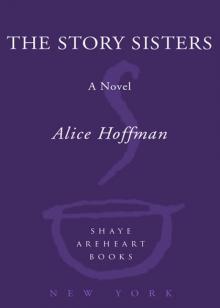 The Story Sisters
The Story Sisters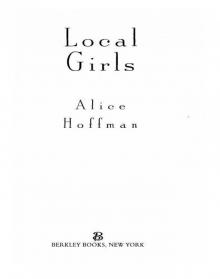 Local Girls
Local Girls Blue Diary
Blue Diary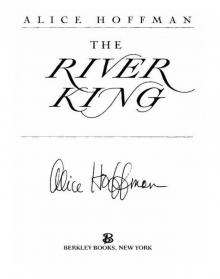 The River King
The River King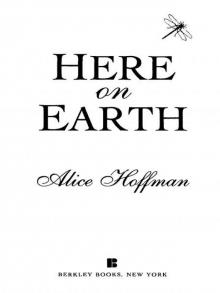 Here on Earth
Here on Earth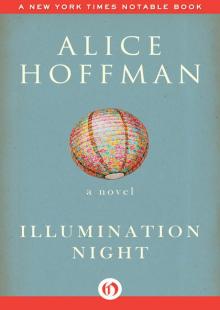 Illumination Night: A Novel
Illumination Night: A Novel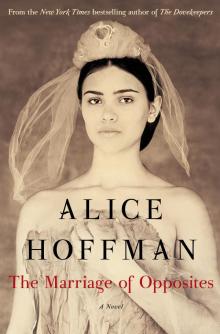 The Marriage of Opposites
The Marriage of Opposites Nightbird
Nightbird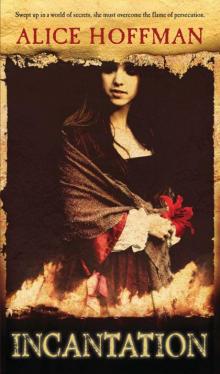 Incantation
Incantation Skylight Confessions
Skylight Confessions The Ice Queen
The Ice Queen Second Nature
Second Nature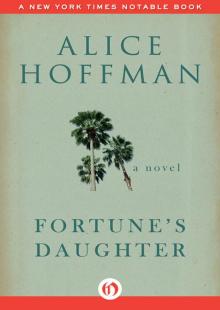 Fortune's Daughter: A Novel
Fortune's Daughter: A Novel Seventh Heaven
Seventh Heaven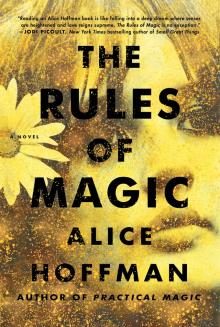 The Rules of Magic
The Rules of Magic The Red Garden
The Red Garden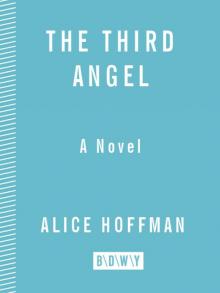 The Third Angel
The Third Angel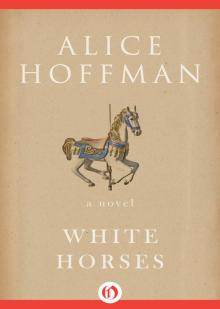 White Horses
White Horses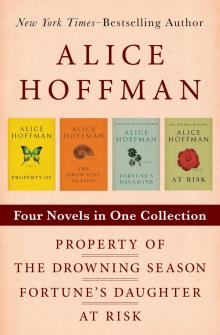 Property of / the Drowning Season / Fortune's Daughter / at Risk
Property of / the Drowning Season / Fortune's Daughter / at Risk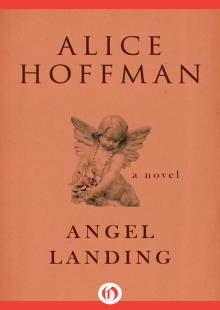 Angel Landing
Angel Landing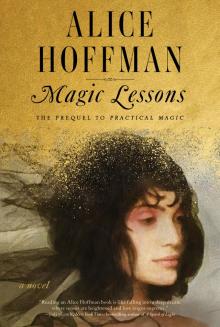 Magic Lessons
Magic Lessons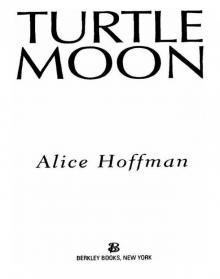 Turtle Moon
Turtle Moon Aquamarine
Aquamarine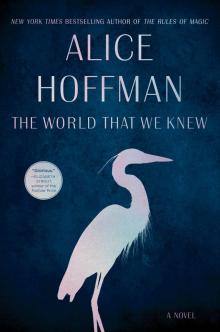 The World That We Knew
The World That We Knew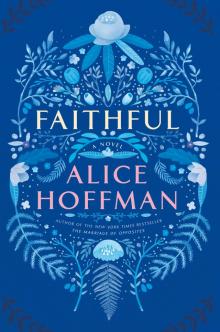 Faithful
Faithful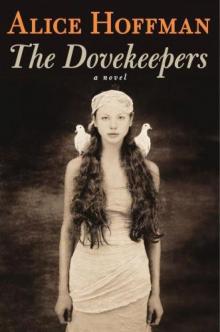 The Dovekeepers
The Dovekeepers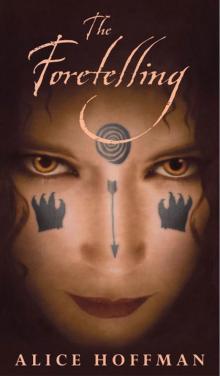 The Foretelling
The Foretelling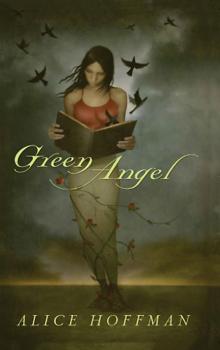 Green Angel
Green Angel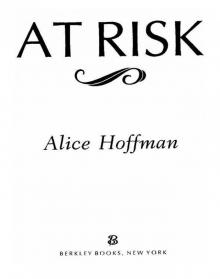 At Risk
At Risk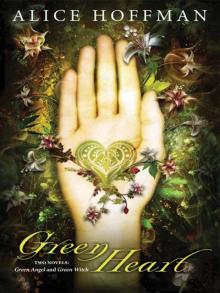 Green Heart
Green Heart Fortune's Daughter
Fortune's Daughter Faerie Knitting
Faerie Knitting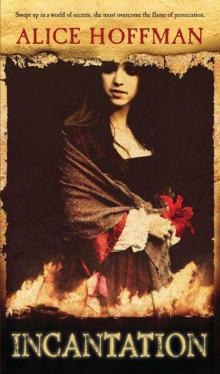 Incantation (v5)
Incantation (v5)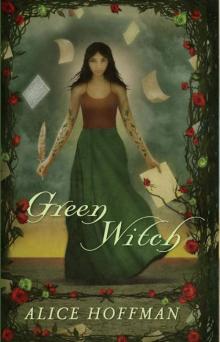 Green Witch
Green Witch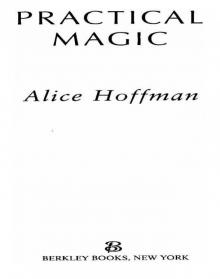 Practical Magic
Practical Magic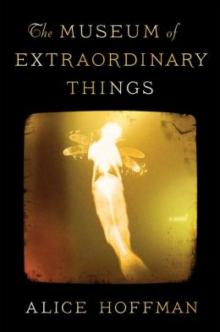 The Museum of Extraordinary Things
The Museum of Extraordinary Things The Probable Future
The Probable Future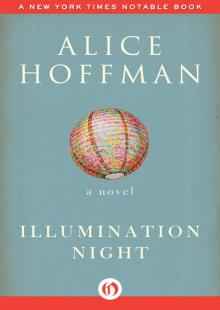 Illumination Night
Illumination Night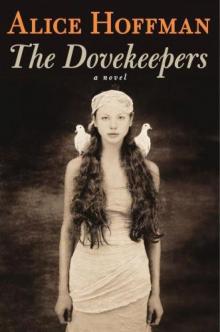 The Dovekeepers: A Novel
The Dovekeepers: A Novel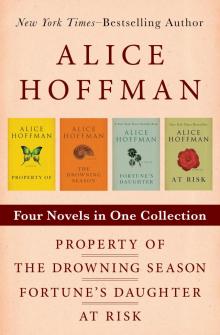 Property Of, the Drowning Season, Fortune's Daughter, and At Risk
Property Of, the Drowning Season, Fortune's Daughter, and At Risk